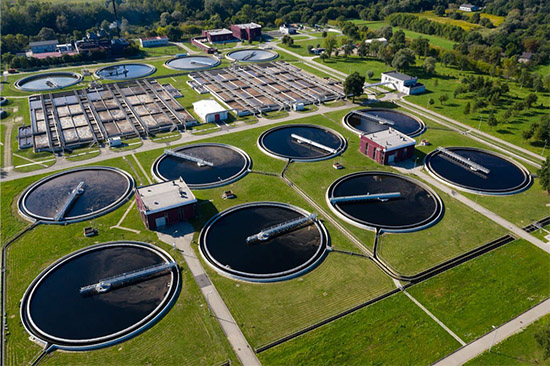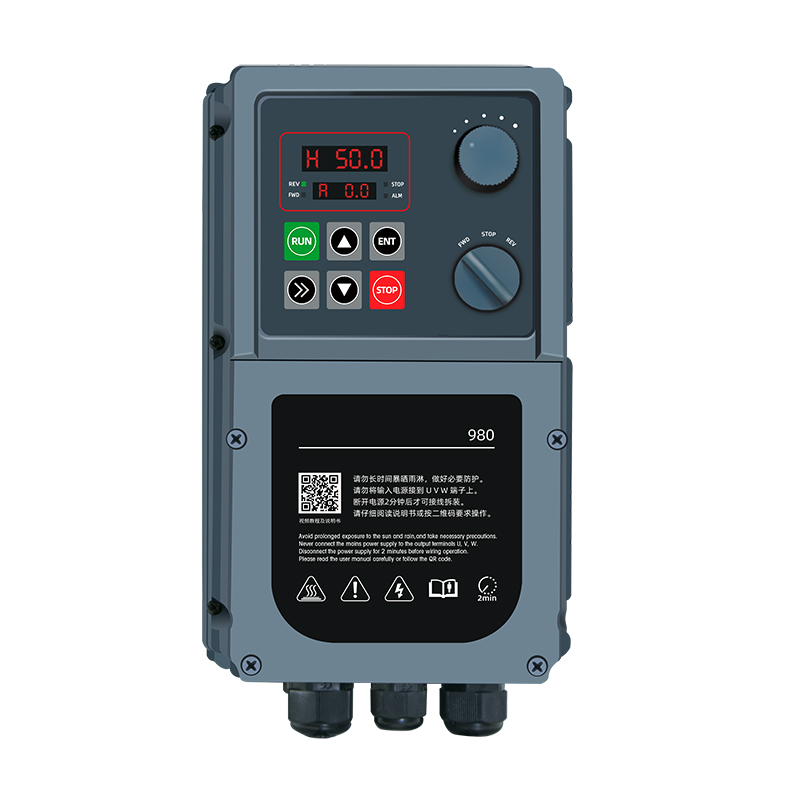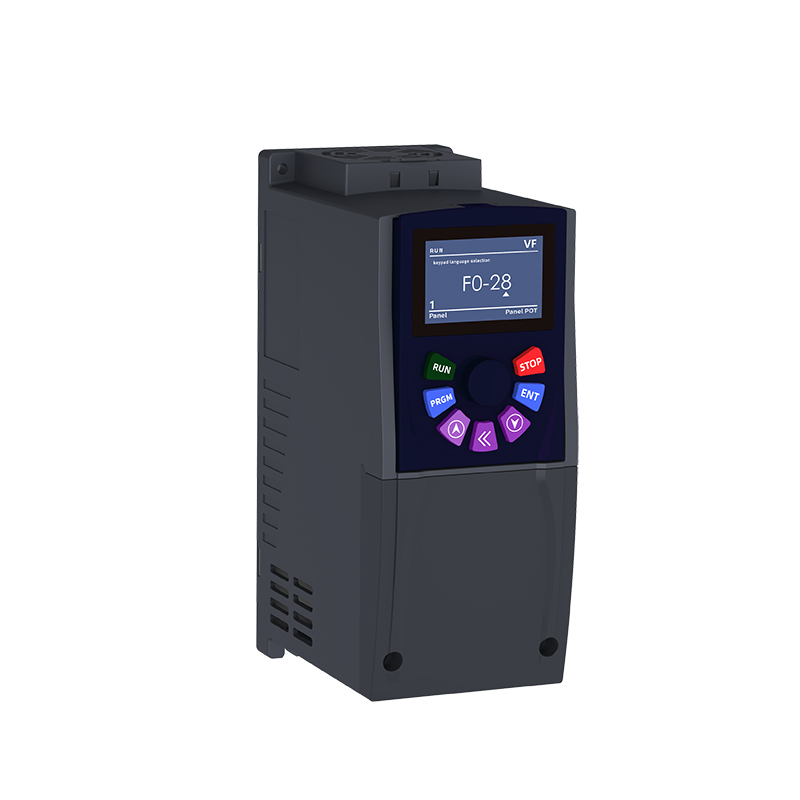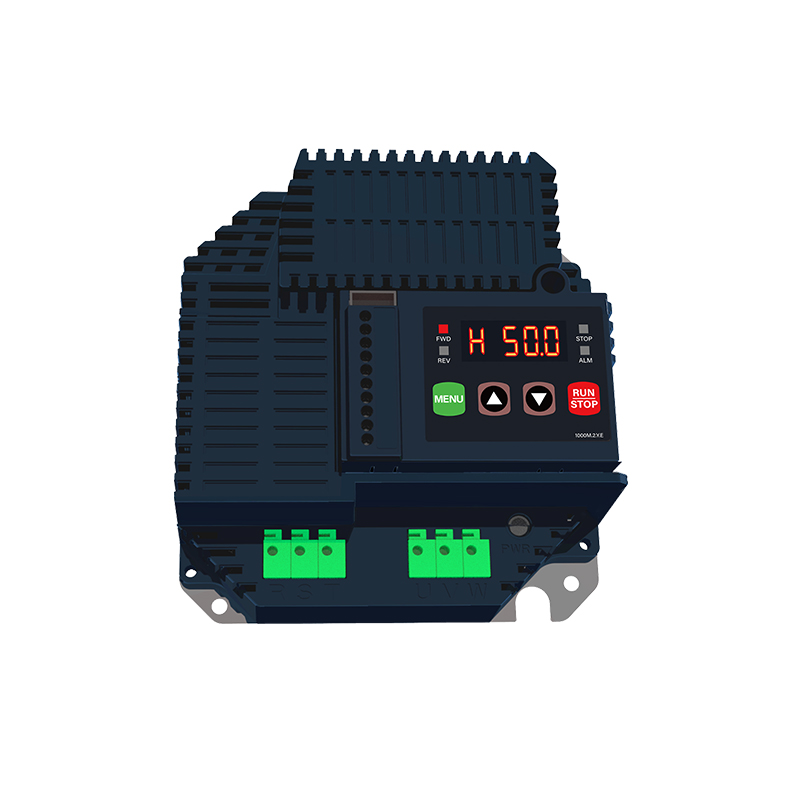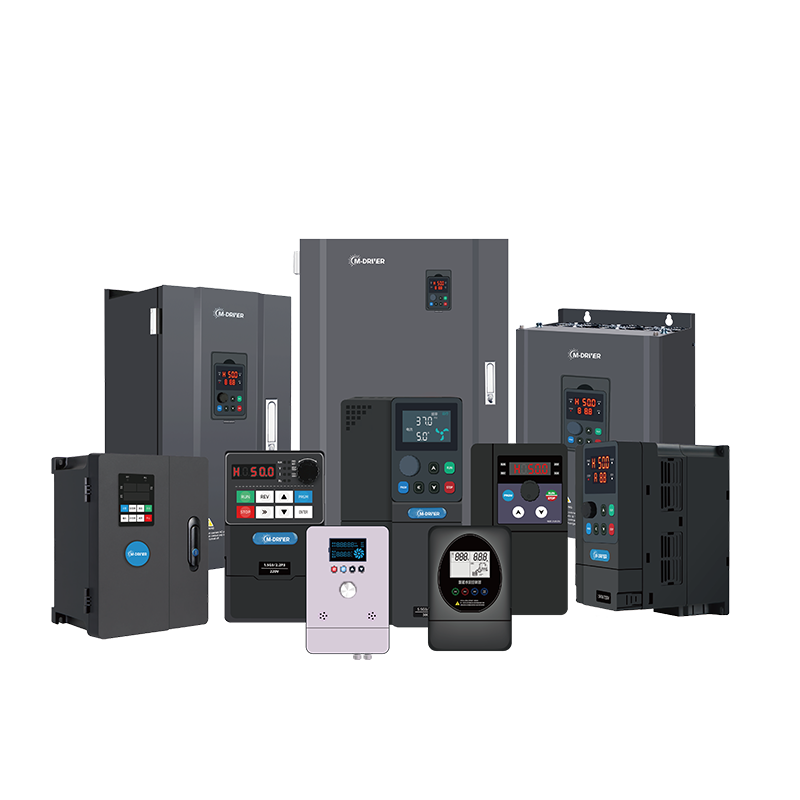project background
A large municipal sewage treatment plant
in North China has a daily processing capacity of 150000 tons. The
original process uses traditional power frequency control to operate,
and it mainly faces three major problems:
High energy consumption:
Key equipment such as aeration fans and lift pumps operate at full speed
for a long time, resulting in serious energy waste;
Insufficient control accuracy: dissolved oxygen (DO) fluctuates greatly, affecting the effectiveness of biochemical treatment;
Serious
equipment wear and tear: frequent start stop leads to mechanical shock,
and high maintenance costs for motors and pipelines.
In 2023, the
factory will introduce an intelligent frequency conversion control
system to carry out energy-saving renovations on the aeration system,
inlet lift pump, and sludge return pump, achieving refined operation
management.
Technical solution and implementation
1. Selection and configuration of frequency converter
Select
M-driver vector control frequency converter, support high-precision
speed regulation, suitable for humid and corrosive environments in
sewage treatment plants;
The aeration fans (4 units of 200kW) adopt a
"3 in use and 1 backup" frequency conversion control strategy, and
automatically adjust the air volume based on real-time feedback of DO;
Three
110kW inlet lift pumps intelligently adjust speed according to flow
requirements to avoid the phenomenon of "big horses pulling small cars";
Two 55kW sludge reflux pumps are equipped with soft start and variable frequency regulation to reduce mechanical wear.
2. Intelligent control strategy
Closed
loop PID control: Real time feedback from online water quality
instruments (DO, COD, ammonia nitrogen, etc.) to dynamically adjust
equipment speed;
Load adaptive regulation: automatically increase
processing capacity during peak hours, and reduce frequency and save
energy during low load hours;
Equipment rotation operation: Balance the operating time of each pump/fan and extend the overall service life.
3. System integration and remote monitoring
The frequency converter seamlessly integrates with the SCADA system in the factory area to achieve centralized control;
Equipped
with a GPRS remote monitoring module, operation and maintenance
personnel can view the real-time running status and receive fault alarms
through a mobile app.
Operational effectiveness and benefits
1. Significant energy conservation and consumption reduction
The
aeration system saves 35% electricity: By accurately controlling the
air volume, excessive aeration is avoided, resulting in an annual
electricity savings of over 1.8 million yuan;
Reduce pump energy consumption by 28%: adjust flow rate as needed to reduce ineffective work;
The
comprehensive electricity consumption per ton of water has decreased by
0.15 kWh, resulting in an annual reduction of approximately 4200 tons
of carbon dioxide emissions.
2. Improved process stability
The
control accuracy of dissolved oxygen (DO) reaches ± 0.2mg/L, the
treatment efficiency of the biochemical tank is improved, and the
effluent COD is stable and meets the standard;
Improved sludge
settling performance, with a 10% reduction in SV30 and a decrease in the
amount of chemicals required for subsequent dewatering processes.
3. Equipment management optimization
The starting current of the motor is limited to 1.5 times the rated value, completely solving the problem of power grid impact;
Reduce equipment failure rate by 50% and maintenance costs by 40%;
The degree of automation has increased, and the frequency of manual intervention has decreased by 60%.
Innovation Highlights
Intelligent linkage control
The aeration system is linked with the inflow load to achieve dynamic optimization of the "air-water ratio";
Abnormal
operating conditions (such as sudden high load water ingress)
automatically trigger protection strategies to ensure system stability.
Green operation mode
During
low load periods at night, the device automatically switches to
"energy-saving mode" and operates at a 30% reduced frequency;
Combining photovoltaic energy storage systems to further reduce grid dependence.
Industry promotion value
This
case proves that the application of frequency conversion technology in
sewage treatment plants not only achieves energy conservation and
consumption reduction, but also improves process stability and equipment
reliability. At present, this model has been promoted in multiple
sewage treatment plants, with an average energy saving rate of over 30%
and an investment payback period of only 1.5-2 years.
In the future, with the deep integration of AI algorithms and IoT technology, variable frequency control systems will develop towards a more intelligent direction, such as:
AI predictive control: adjust equipment parameters in advance based on inflow water quality prediction;
Virtual power plant participation: through demand response mechanism, flexibly adjust the power load of the plant area.
Frequency
conversion technology is becoming the core lever for the sewage
treatment industry to achieve the "dual carbon" goal, promoting the
transformation of traditional sewage plants towards intelligence and
greenness.


